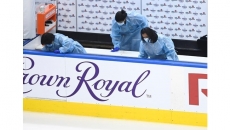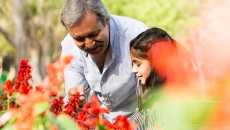If you’ve never grown your own transplants for your garden, perhaps this is the year to do it. It’s economical, it allows you to grow varieties you might not be able to buy as transplants, it’s satisfying and it’s easy.
If you’re new to the transplant game, start with a flower or vegetable that’s relatively easy to raise from seed. Zinnia, calendula and cosmos are some of the easiest. Among vegetables, choose from among lettuce, kale, cabbage and — that most widely grown vegetable of all — tomato.
There are some vegetables which shouldn't be grown as transplants. Beans, peas and okra fall into that category because the yield is small from each plant. Outdoors, in the garden, you sow these plants in a furrow with seeds only a few inches apart. That would take a lot of transplants! For some other vegetables, such as carrots and parsnips, the roots don’t take kindly to being transplanted.
Better to hone your transplant-raising skills with a plant that really does need to be grown this way, such as tomatoes. In much of the country, we need to start tomatoes indoors so the plants have enough time to ripen a decent yield out in the garden.
GERMINATION
To get started with transplants, you’ll need a suitable container and soil. The container need not — should not — be too big, but does need to be 2 to 4 inches deep. Plastic yogurt containers are good, even egg cartons (for “jumbo” eggs), and, of course, those cell packs in which your purchased transplants once lived. Perhaps you still have some lying around.
Most important is that any container have one or more holes in the bottom, so excess water can drain out.
Garden soil, even good garden soil, is not suitable because it doesn’t drain quickly enough in the confines of a container. Drainage of a “potting mix” (“potting soil”) is enhanced by the inclusion of some coarse material such as perlite, vermiculite or sand. If you have little experience raising transplants, buy a potting mix. It will already have the drainage material mixed in.
Fill the containers with the potting mix and firm it down. Not too much, though.
Then sow seeds, 3 or 4 per container or cell, as insurance. Do this by poking a hole a few times the thickness of a seed into the mix, and drop in the seed. Smooth over the potting mix to cover the seeds, and firm it again.
Water the container by standing it in a pan with water reaching about half as high as the height of the container. After a few hours, lift the container up out of the water.
Seeds need warmth to germinate, the amount varying with the kind of seed. A good average for just about all seeds is about 75° F. Beyond their optimum germination temperatures, seeds will still germinate, but more slowly.
Most seeds don’t need light to germinate. So a suitable place is almost anywhere in your home. Some refrigerators are warm on top; that could be a suitable place. Same for near a radiator. A thermostatically controlled seed mat offers more control.
To keep moisture from evaporating from your container, cover it with a pane of clear glass or plastic, or enclose the container in a plastic bag.
THE EXCITEMENT BEGINS
Now for the exciting part, waiting to see little, green sprouts. Remove all but the sturdiest sprout from each container or cell, being careful not to disturb the roots of the sprout that remains.
Your goal now is to grow sturdy, stocky transplants that can tolerate a move to the great outdoors. For this, you need abundant light and cooler temperatures. Even tomatoes, a summer vegetable, grow best as transplants with temperatures in the 60s.
Don't worry if you can't achieve ideal growing conditions; what’s possible in a commercial greenhouse often isn’t feasible in a home.
A sunny, south-facing window works well, especially if it's in a cool room. Rotate the plants daily so they grow uniformly, rather than one side always bending towards the light.
Another option for light is a grow-light, either fluorescent or LED. Although these lights look bright, they don’t compare with good ol’ sunshine. Light intensity falls off rapidly with distance from a light, so keep the light just a few inches above the plants. Or combine a sunny window and a grow-light.
Be careful not to overwater or underwater. I lift a container and its weight tells me if water is needed. The ideal for stocky growth is keeping plants just slightly underwatered.
In four to six weeks, most transplants should be two to three times the height of their containers, stocky and ready for the outdoors. Or almost ready. Acclimate them to their future environment with a week of being outdoors somewhere shielded from the full brunt of sun, wind and cold. Then plant them in the garden.
And perhaps you’ll be inspired next year to grow more of your own transplants.
___






